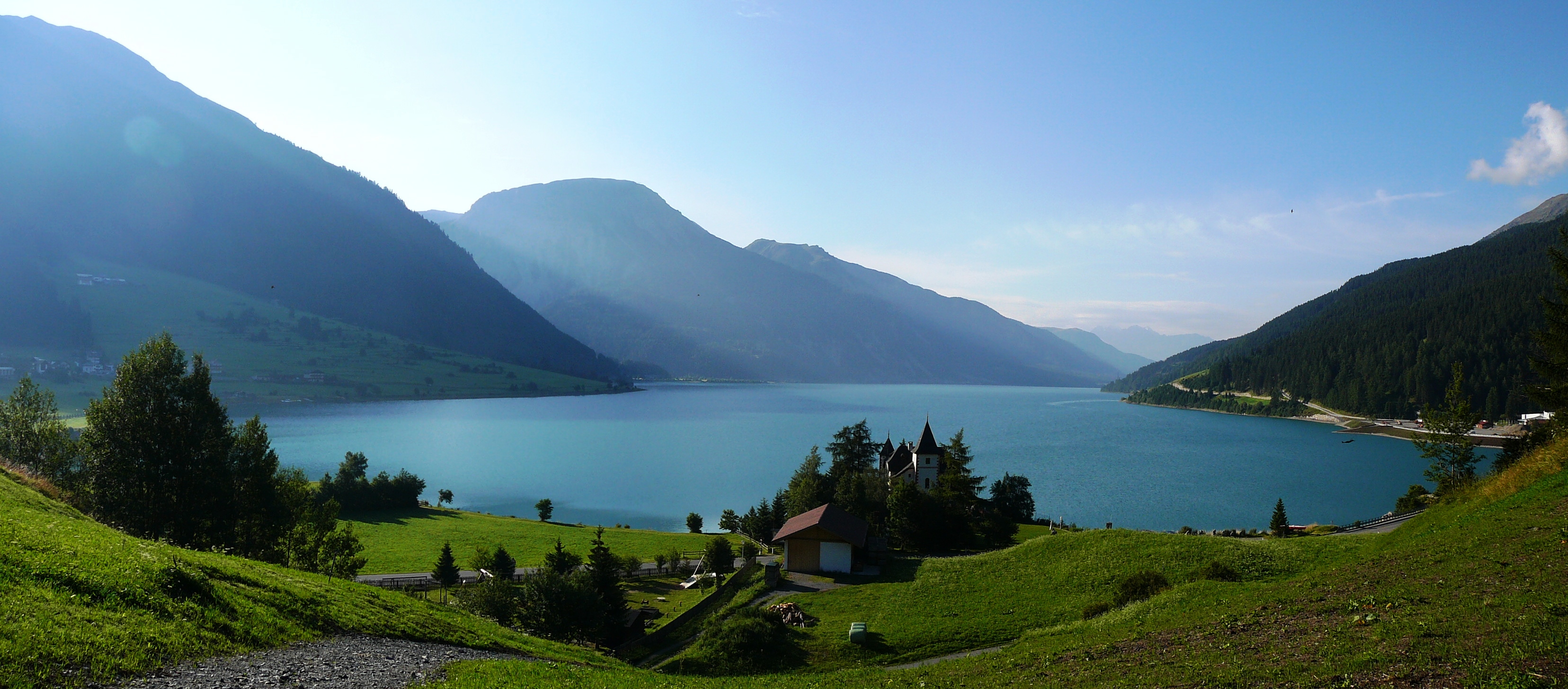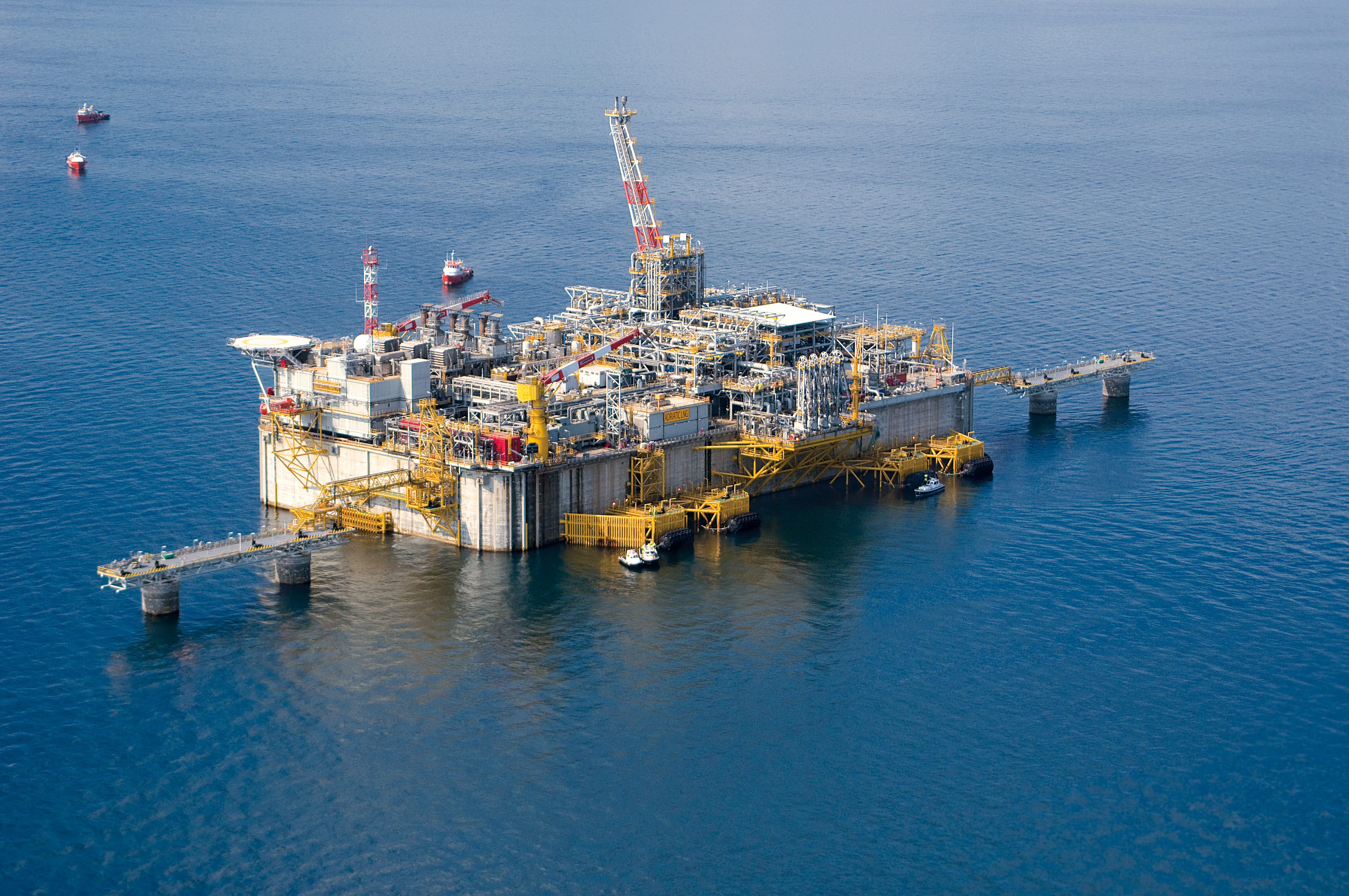|
Reschensee
Reschensee (; ; Italian: ''Lago di Resia'' ) or Lake Reschen is an artificial lake in the western portion of South Tyrol, Italy, approximately south of the Reschen Pass, which forms the border with Austria, and east of the mountain ridge forming the border with Switzerland. With its capacity of 120 million cubic metres (97,000 ac·ft) it is the largest lake in the province. Its surface area of makes it also the largest lake above in the Alps.Schweizerischer Wasserwirtschaftsverband, Wasser- und Energiewirtschaft', Vol. 43-44, p.115 It is fed by the Adige, Rojenbach and Karlinbach and drained by the Adige. The lake is famous for the steeple of a submerged 14th-century church; when the water freezes, this can be reached on foot. A legend says that during winter one can still hear church bells ring. In reality the bells were removed from the tower on July 18, 1950, a week before the demolition of the church nave and the creation of the lake. Origins Plans for a smaller (5 m deep) ... [...More Info...] [...Related Items...] OR: [Wikipedia] [Google] [Baidu] |
Karlinbach
The Karlinbach ( it, Rio Carlino) is a stream in South Tyrol, Italy, that it is sourced from the Weißkugel mountain in the Ötztal Alps mountain range. It flows in the Lake Reschen, near the village of Graun im Vinschgau Graun im Vinschgau (; it, Curon Venosta ; rm, La Carun) is a ''comune'' (municipality) and a village in South Tyrol in northern Italy, located about northwest of Bolzano, on the border with Austria and Switzerland. Geography At 1 January 201 .... References Civic Network of South Tyrol(in German). Rivers of Italy Rivers of South Tyrol {{Italy-river-stub ... [...More Info...] [...Related Items...] OR: [Wikipedia] [Google] [Baidu] |
Adige
The Adige (; german: Etsch ; vec, Àdexe ; rm, Adisch ; lld, Adesc; la, Athesis; grc, Ἄθεσις, Áthesis, or , ''Átagis'') is the second-longest river in Italy, after the Po. It rises near the Reschen Pass in the Vinschgau in the province of South Tyrol, near the Italian border with Austria and Switzerland, and flows through most of northeastern Italy to the Adriatic Sea. The river's name is Celtic in origin, from the Proto-Celtic cel-x-proto, *yt-ese, label=none, "the water", cognate with the River Tees in England (anciently ''Athesis'', ''Teesa''). Description The river source is near the Reschen Pass () close to the borders with Austria and Switzerland above the Inn valley. It flows through the artificial alpine Lake Reschen. The lake is known for the church tower that marks the site of the former village of Alt Graun ("Old Graun"); it was evacuated and flooded in 1953 after the dam was finished. Near Glurns, the Rom river joins from the Swiss Val Müstair. ... [...More Info...] [...Related Items...] OR: [Wikipedia] [Google] [Baidu] |
Graun Im Vinschgau
Graun im Vinschgau (; it, Curon Venosta ; rm, La Carun) is a ''comune'' (municipality) and a village in South Tyrol in northern Italy, located about northwest of Bolzano, on the border with Austria and Switzerland. Geography At 1 January 2011, it had a registered population of 2,447 and an area of .All demographics and other statistics: Italian statistical institute Istat. The municipality contains the subdivisions Langtaufers/Vallelunga, Reschen/Resia, Rojen/Roja and Sankt Valentin auf der Haide/San Valentino alla Muta. Adjacent municipalities: Mals, Kaunertal (Austria), Nauders (Austria), Pfunds (Austria), Sölden (Austria), Ramosch (Switzerland), Sent (Switzerland), and Tschlin (Switzerland). The village of Graun borders the Reschensee, which was massively deepened and extended when the valley was dammed in order to produce hydro-electricity. The original village was flooded after the dam's completion in July 1950; it had been abandoned and largely demolished, and Graun ... [...More Info...] [...Related Items...] OR: [Wikipedia] [Google] [Baidu] |
South Tyrol
it, Provincia Autonoma di Bolzano – Alto Adige lld, Provinzia Autonoma de Balsan/Bulsan – Südtirol , settlement_type = Autonomous province , image_skyline = , image_alt = , image_caption = , image_flag = Flag_of_South_Tyrol.svg , flag_alt = , image_shield = Suedtirol CoA.svg , shield_size = x100px , shield_alt = Coat of arms of Tyrol , anthem = , image_map = Bolzano in Italy.svg , map_alt = , map_caption = Map highlighting the location of the province of South Tyrol in Italy (in red) , coordinates = , coordinates_footnotes = , subdivision_type = Country , subdivision_name = Italy , subdivision_type1 = R ... [...More Info...] [...Related Items...] OR: [Wikipedia] [Google] [Baidu] |
Reschen Pass
Reschen Pass (german: Reschenpass, ; it, Passo di Resia ) is a mountain pass across the main chain of the Alps, connecting the Upper Inn Valley in the northwest with the Vinschgau region in the southeast. Since 1919, the border between South Tyrol, Italy and Tyrol, Austria has approximately followed the watershed, the pass summit at a height of being completely on Italian territory. Geography Location Reschen is one of the principal passes of the Alps, located between Brenner Pass to the east and the Splügen to the west. It is part of the drainage divide between the Danube in the north and the Adige in the south. The village of Reschen (''Resia'') is directly located on the watershed, on the shore of the Reschensee reservoir, built in 1950 and famous for the bell tower which emerges from the water in front of Graun municipality. The border with Nauders, Austria runs about north of the pass summit towards the tripoint with Valsot, Switzerland in the west. Climate Reschen has ... [...More Info...] [...Related Items...] OR: [Wikipedia] [Google] [Baidu] |
Antonio Segni
Antonio Segni (; 2 February 1891 – 1 December 1972) was an Italian politician and statesman who served as the president of Italy from May 1962 to December 1964 and the prime minister of Italy in two distinct terms between 1955 and 1960. A member of the centrist Christian Democracy, Segni held numerous prominent offices in Italy's post-war period, serving as Minister of Foreign Affairs, Interior, Defence, Agriculture, and Public Education. He was the first Sardinian ever to become head of state and government. He was also the second shortest-serving president in the history of the Republic and the first to resign from office due to illness. Early life Segni was born in Sassari in 1891. His father, Celestino Segni, was a lawyer and professor at the University of Sassari, while his mother, Annetta Campus, was a housewife. He grew up in a well-off family, involved in Sardinian politics: his father served as municipal and provincial councilor for Sassari as well as deputy mayor du ... [...More Info...] [...Related Items...] OR: [Wikipedia] [Google] [Baidu] |
Edison (company)
Edison S.p.A. is an Italian electric utility company headquartered in Milan. The company was established in 1884 and acquired by Electricité de France in 2012. Edison employs more than 5,000 people in Europe, North Africa and the Middle East. Chairman of the board is Luc Rémont (CEO of EDF) and chief executive officer is Nicola Monti. History Early history (1884-1966) Founded in 1884 by Giuseppe Colombo in Milan, Italy, as "Società generale italiana di elettricità sistema Edison", it served the purpose of introducing and applying Thomas Edison's inventions to Italy. Indeed, Colombo, an engineering professor, was a great admirer of Edison, whom he had met in the United States in 1881, securing an exclusive licence for some of his patents for Italy and hiring some of his collaborators. Edison operated Santa Radegonda power plant, Europe's first power plant. In the following decades Edison continued growing, especially in hydroelectric power, and came to control power distrib ... [...More Info...] [...Related Items...] OR: [Wikipedia] [Google] [Baidu] |
Montecatini (company)
Montecatini was an important Italian chemicals company founded in 1888. It was called: ''quasi-monopolist of the Italian chemical industry'' in the time between World War I and the end of World War II. Problems led to a merger with the Edison company in 1966 forming the Montedison company. History The company was founded as a small mining business in Montecatini Val di Cecina operating a copper pyrite mine in 1888. The production increased and a shift from copper ore production to pyrite production as a starting material for sulfuric acid production when Guido Donegani was made director in 1910. Large amounts of sulfuric acid are used for the production of superphosphate fertilizers and therefore Montecatini expanded into this business. By 1920 the company had acquired the two largest phosphate fertilizer producers Unione Concimi and Colla e Concimi. The company became dominant in chemical industry of Italy during the time of Fascist Italy. Montecatini collaborated with RI ... [...More Info...] [...Related Items...] OR: [Wikipedia] [Google] [Baidu] |
Alps
The Alps () ; german: Alpen ; it, Alpi ; rm, Alps ; sl, Alpe . are the highest and most extensive mountain range system that lies entirely in Europe, stretching approximately across seven Alpine countries (from west to east): France, Switzerland, Italy, Liechtenstein, Austria, Germany, and Slovenia. The Alpine arch generally extends from Nice on the western Mediterranean to Trieste on the Adriatic and Vienna at the beginning of the Pannonian Basin. The mountains were formed over tens of millions of years as the African and Eurasian tectonic plates collided. Extreme shortening caused by the event resulted in marine sedimentary rocks rising by thrusting and folding into high mountain peaks such as Mont Blanc and the Matterhorn. Mont Blanc spans the French–Italian border, and at is the highest mountain in the Alps. The Alpine region area contains 128 peaks higher than . The altitude and size of the range affect the climate in Europe; in the mountains, precipitation ... [...More Info...] [...Related Items...] OR: [Wikipedia] [Google] [Baidu] |
Nave
The nave () is the central part of a church, stretching from the (normally western) main entrance or rear wall, to the transepts, or in a church without transepts, to the chancel. When a church contains side aisles, as in a basilica-type building, the strict definition of the term "nave" is restricted to the central aisle. In a broader, more colloquial sense, the nave includes all areas available for the lay worshippers, including the side-aisles and transepts.Cram, Ralph Adams Nave The Catholic Encyclopedia. Vol. 10. New York: Robert Appleton Company, 1911. Accessed 13 July 2018 Either way, the nave is distinct from the area reserved for the choir and clergy. Description The nave extends from the entry—which may have a separate vestibule (the narthex)—to the chancel and may be flanked by lower side-aisles separated from the nave by an arcade. If the aisles are high and of a width comparable to the central nave, the structure is sometimes said to have three naves. ... [...More Info...] [...Related Items...] OR: [Wikipedia] [Google] [Baidu] |






